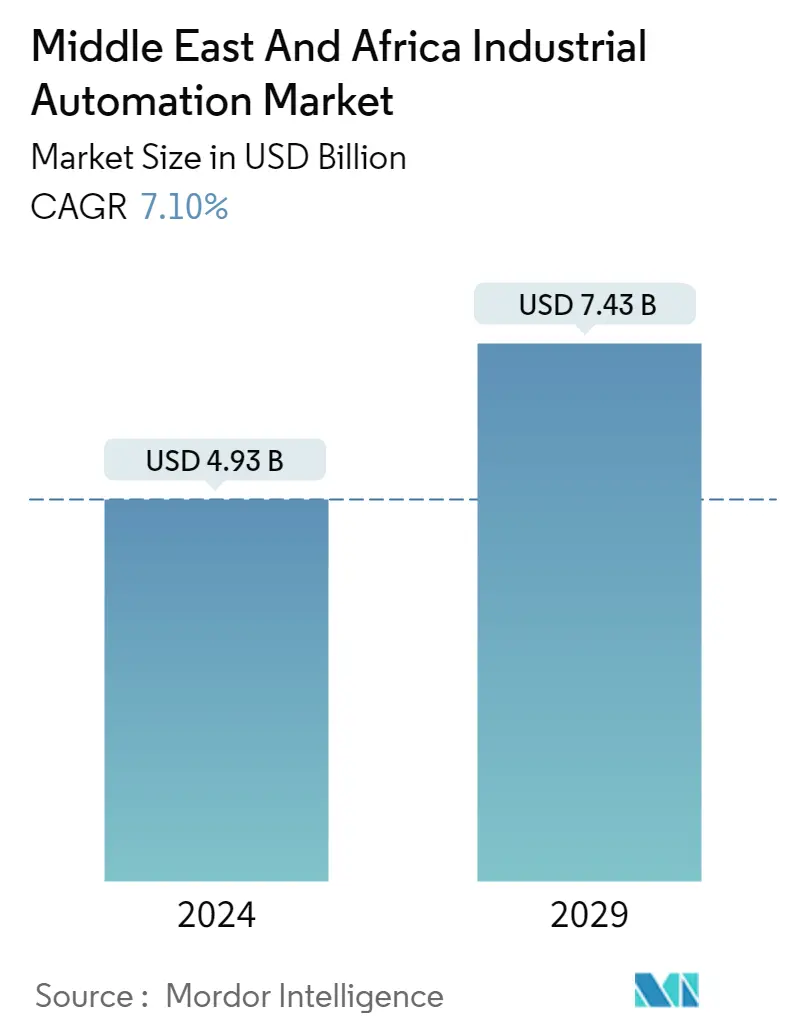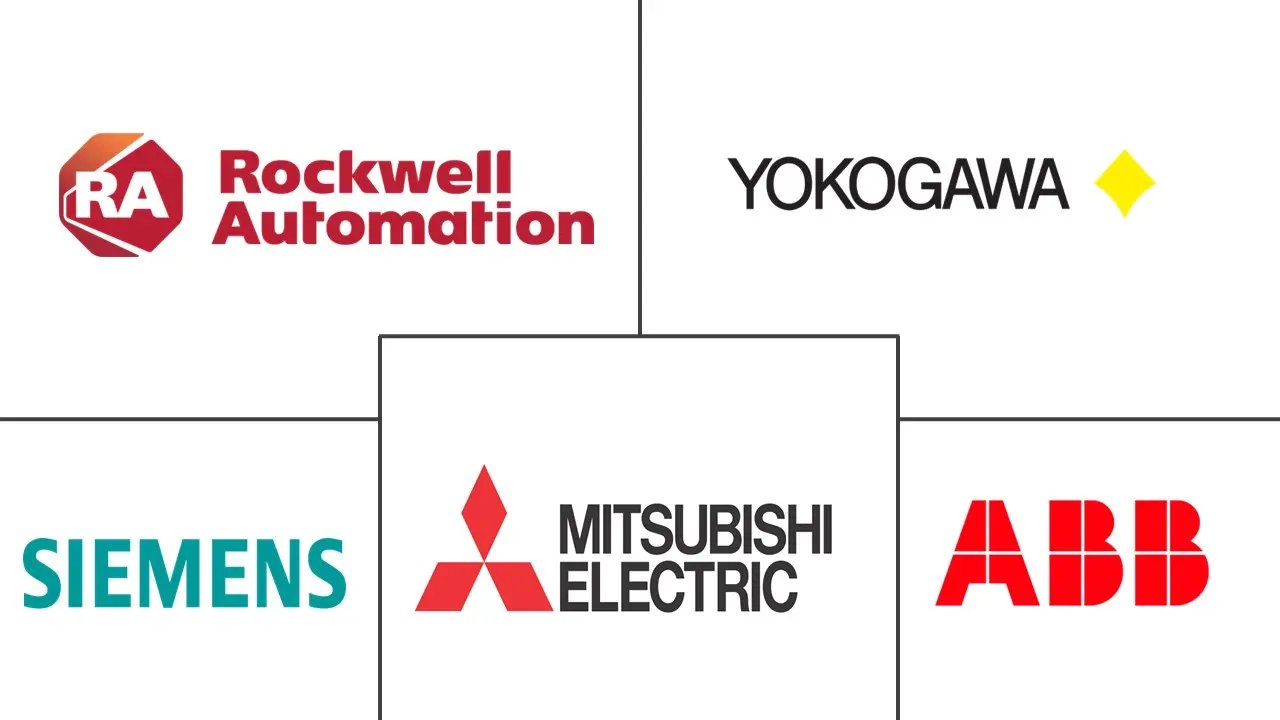Market Size of Middle East And Africa Industrial Automation Industry

| Study Period | 2019 - 2029 |
| Base Year For Estimation | 2023 |
| Market Size (2024) | USD 4.93 Billion |
| Market Size (2029) | USD 7.43 Billion |
| CAGR (2024 - 2029) | 7.10 % |
| Market Concentration | Medium |
Major Players
*Disclaimer: Major Players sorted in no particular order |
Need a report that reflects how COVID-19 has impacted this market and its growth?
Middle East And Africa Industrial Automation Market Analysis
The Middle East And Africa Industrial Automation Market size is estimated at USD 4.93 billion in 2024, and is expected to reach USD 7.43 billion by 2029, growing at a CAGR of 7.10% during the forecast period (2024-2029).
The growing active collaboration between governments, regulators, and associations for economic expansion is one of the primary aspects driving growth in the region's automation and manufacturing sectors. For instance, in May 2022, RX Africa announced the Future Manufacturing Africa Trade Fair and Summit 2023, exchanging valuable industry expertise to increase investment prospects in the African continent's manufacturing sector.
- The UAE Government is focused on doubling the contribution of industrial manufacturing to the country's GDP to 25%, as highlighted in Dubai Industrial Strategy 2030 and Abu Dhabi Economic Vision 2030. Operation 300bn is a government strategy aimed at developing the industrial sector and enhancing its role in stimulating the economy of the UAE. It aims to increase the industrial sector's contribution to the GDP to AED 300 billion (~USD 82 billion) by 2031.
- Furthermore, the Emirates Development Bank (EDB) is a crucial enabler of Operation 300bn. Under the strategy, the bank has allocated AED 30 billion to support priority industrial sectors over five years. Such investments are expected to boost the industrial sector's demand for automated material handling.
- Moreover, rising technological advancements support market growth. In addition, the UAE Ministry of Industry and Advanced Technology and Abu Dhabi defense technology company Edge Group signed an agreement in August 2022 to develop the Emirates' first Industry 4.0 Enablement Centre. The center will help manufacturers beef up their operations by guiding them on using automation, and data-driven business expansion will further drive market growth.
- In February 2022, to fulfill the increased demand for conveying systems in the region, Dubai-based Acme Intralog, a provider of industrial and warehouse automation solutions, stated that it had enhanced the fabrication and manufacturing capabilities of conveyor belts used at its plant in the UAE. The company provides comprehensive conveyor belt solutions for various business sectors, including food and beverage, construction, packaging, textile, and material handling.
- Furthermore, the UAE intends to increase its power generation capacity by approximately 21 GW, with solar power accounting for 26.1% of the total additional generation capacity. These infrastructure developments will likely provide solutions for industrial controls and factory automation.
- However, a higher initial investment cost involved with industrial automation solutions continues to challenge the studied market's growth, especially in the African region, wherein price sensitivity is higher.
- Inflation has a significant impact on industrial manufacturing, as it can lead to higher costs for manufacturers. This can be due to various factors, such as higher prices for raw materials, increased shipping costs, and labor costs and shortages. As a result, manufacturers may be forced to raise their prices to maintain profitability, which can ultimately lead to decreased demand for their products. In addition, inflation can also lead to contract constraints, shifts in labor, and input issues for manufacturers, impacting the studied market's growth.
